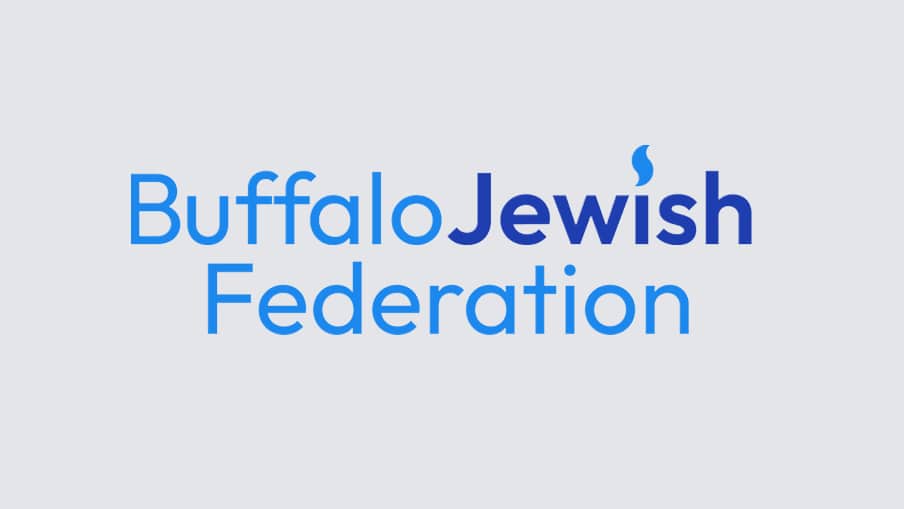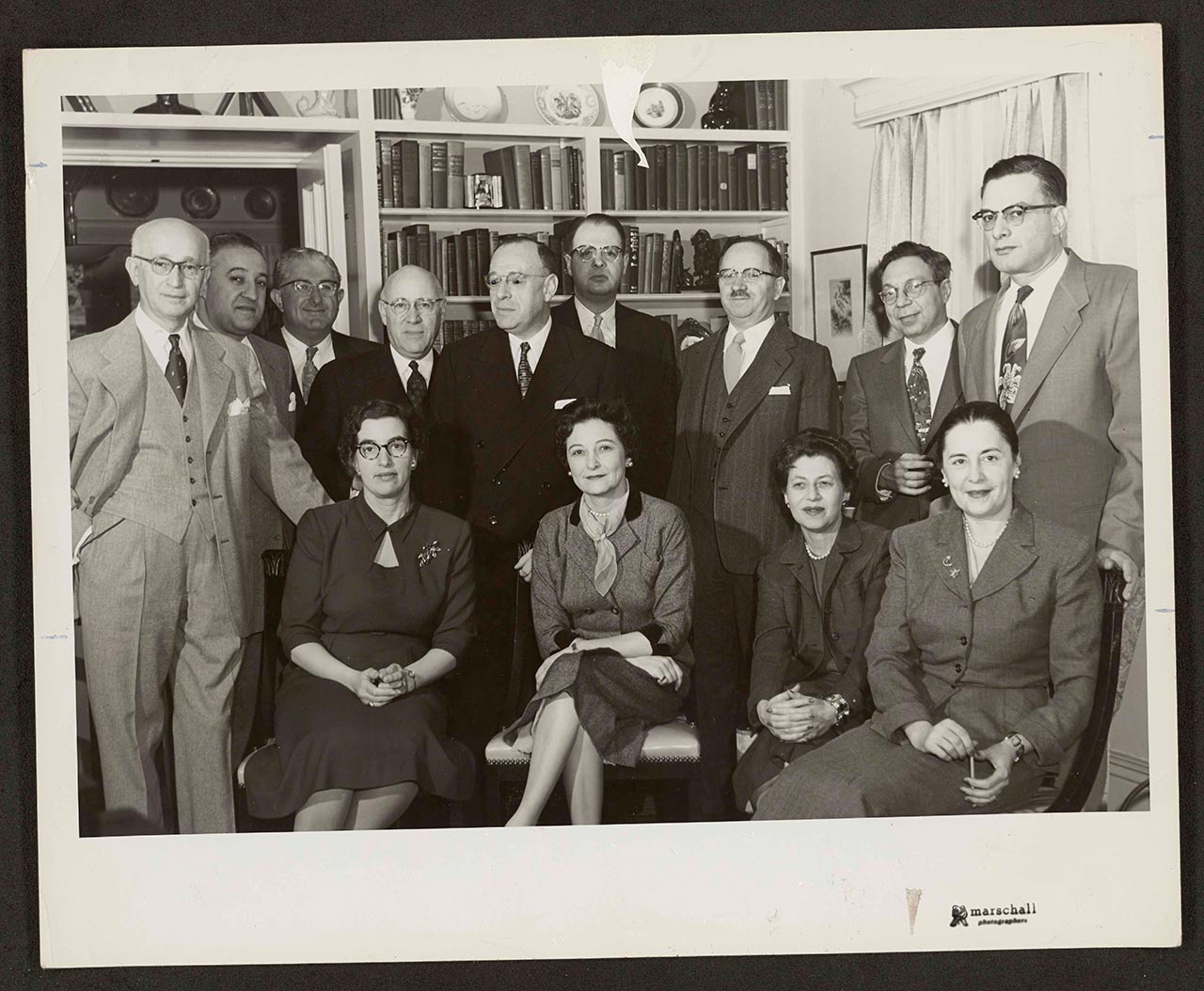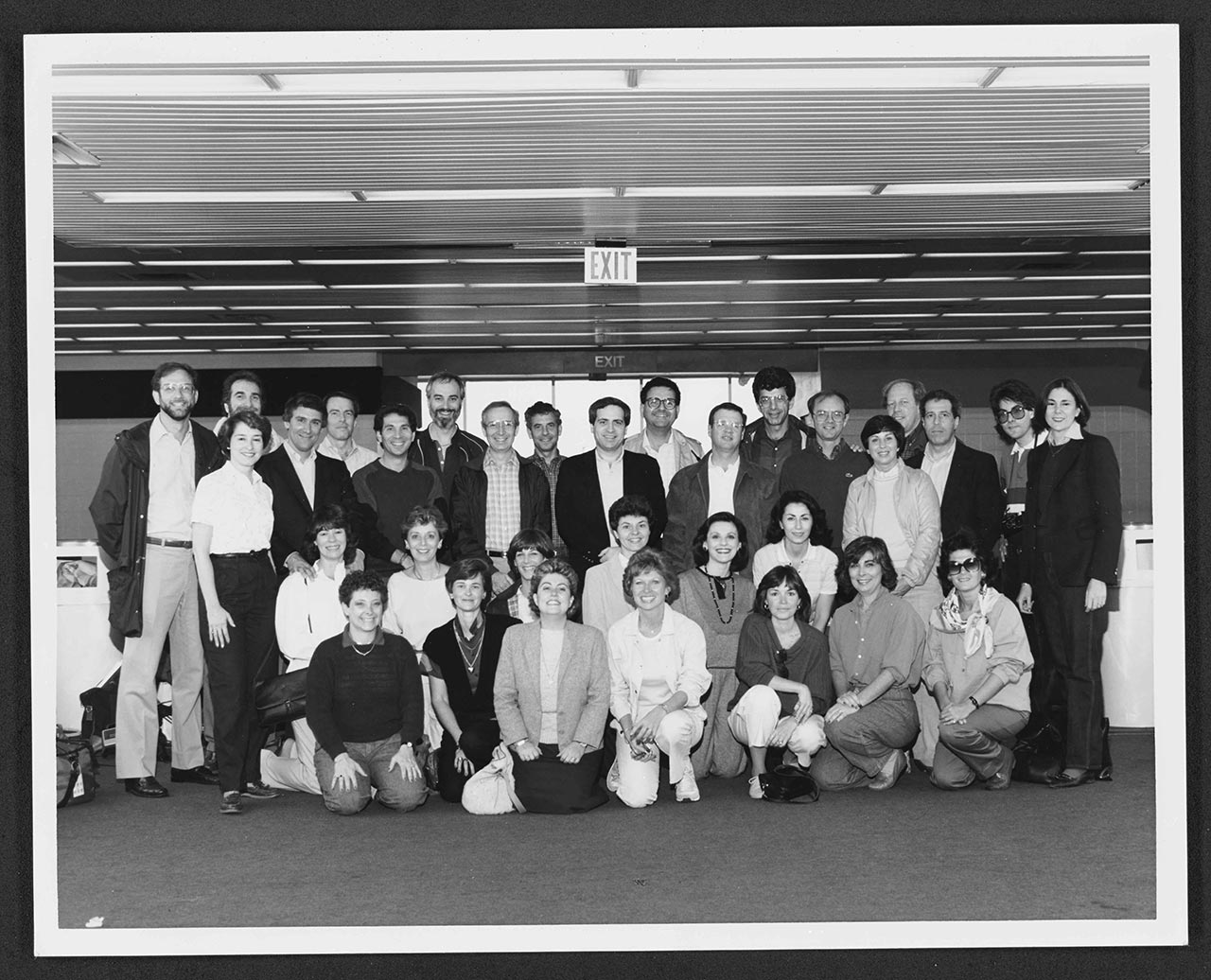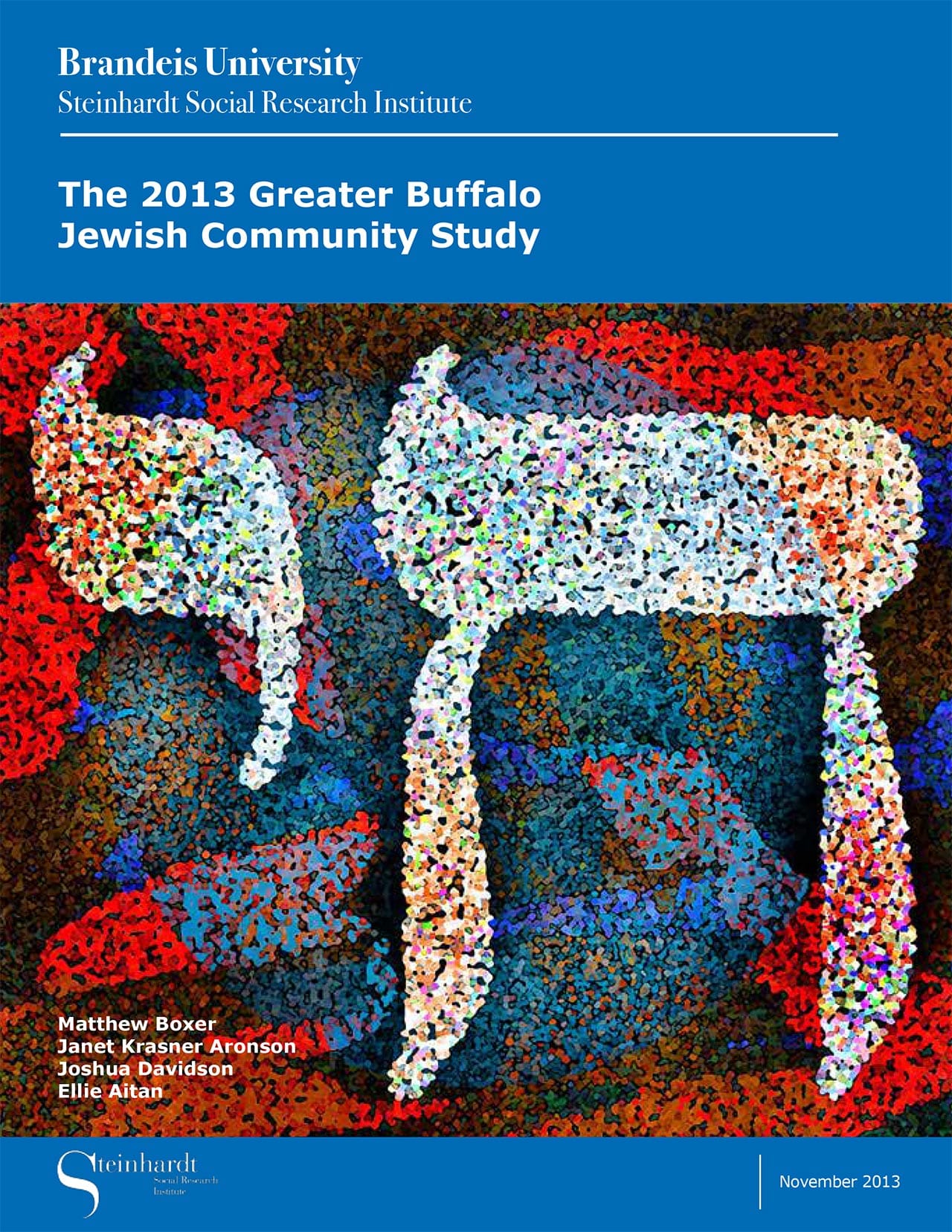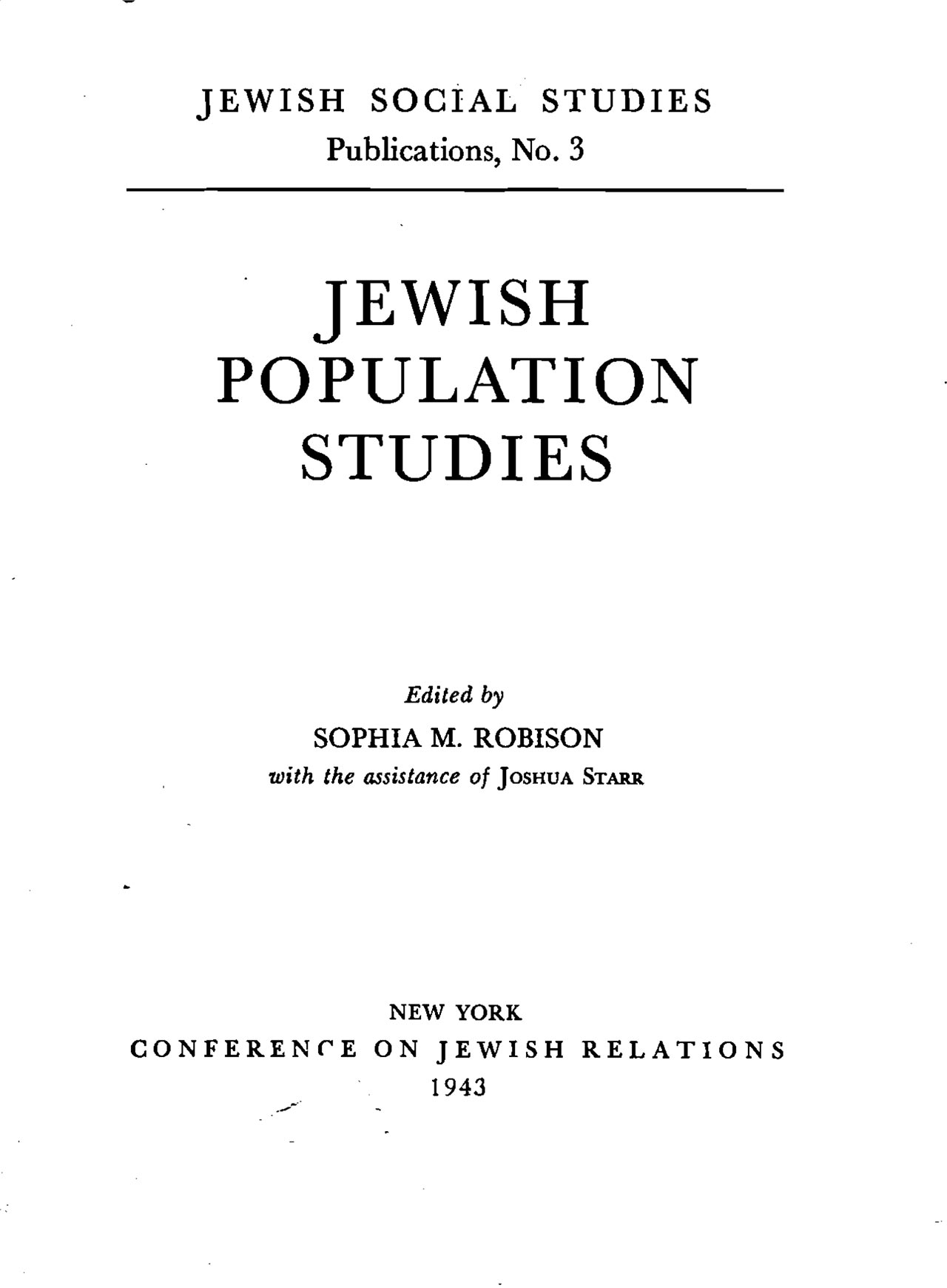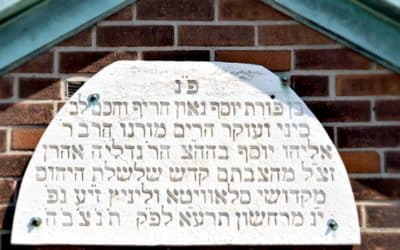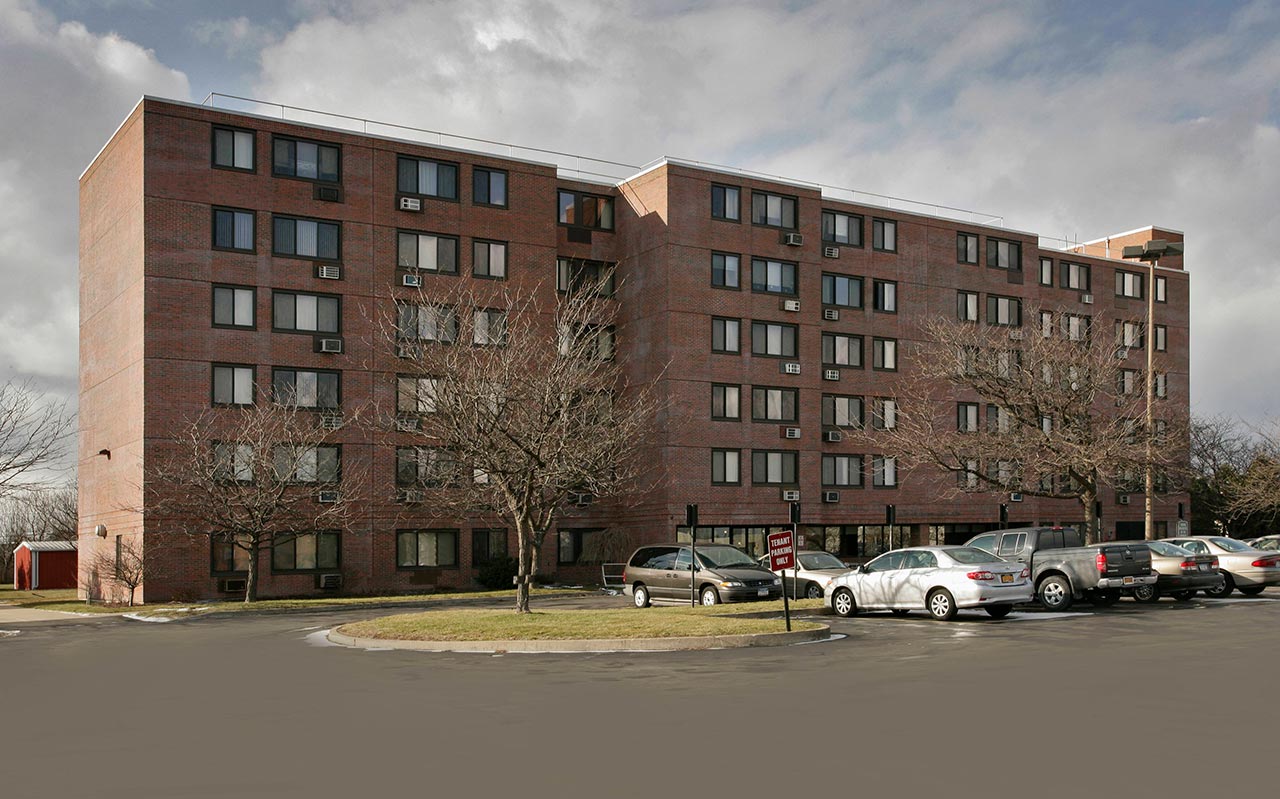Agencies / Buffalo Jewish Federation
The Buffalo Jewish Federation can trace its history back to 1903, when several fundraising and social service volunteer-led organizations came together in order to coordinate their work for the benefit of community members and organizations. Evolving into a professionally staffed agency, it supports organizational and agency partners, and community members, locally, in Israel and around the world.
Overview
In 1903, four organizations consolidated their philanthropic activities into one organization to form the Federated Jewish Charities. A Board of Governors, with representatives from each group was established, and officers elected Julius L. Saperston as the first president of the Federation. Several committees were established including Finance, Relief, Education, Law, and Maternity. In 1905, a superintendent was appointed as an administrator. At first, the hope was to raise funds from board members, but a Kol Nidre appeal was always necessary and became an annual event, the forerunner to the annual campaign.
Two of the organizations that were part of the Federated Jewish Charities could lay claim to histories stretching back to the 1860s while the other two had formed to respond to the needs of new immigrants. The Men’s Hebrew Benevolent Society and the Women’s Hebrew Benevolent Society were founded in the 1860s to help individuals and their families who needed help to pay hospital bills or other needs including funeral costs. The Ladies’ Sewing and Aid Society, and the Sisterhood of Zion were later organizations, formed in the 1890s to aid with immigrant integration and acculturation providing clothing and linens and with services from English classes to childcare. All four organizations had strong connections with Temple Beth Zion.
In 1907, the Federated Jewish Charities moved into Zion House, 456 Jefferson Avenue, the home of the Sisterhood of Zion. Leaders of the Federated Jewish Charities included Eugene Warner (later leader of the Federation), Cecil B. Wiener (later head of the Relief Department, Judge) and Mrs. Marcus Spiegel (one of the founders of the precursor to the Foundation for Jewish Philanthropies). By 1909, Cecil B. Wiener, was the General Manager and running the Relief Department. As both employee of the Federation, and member of its Board of Governors she made an indelible mark on the organization until her retirement in 1944.
The West Side and Temple Beth Zion balance of membership changed in 1909 with the inclusion of the Jewish Aid Society, an East Side group that retained its own autonomy as a separate constituent agency. East-siders, including Sundel J. Holender, Isador Setel, Isaac S. Given, Samuel Cristall among others, joined the governors, and within five years had changed the balance of membership from its founding base. From 1909 to the 1930s, the early-Federation continued to fundraise and dispense relief through its Relief Department, the precursor to Jewish Family Service. Long term bequests and capital fundraising were handled by a separate organization from 1911 by the forerunner to the Foundation for Jewish Philanthropies (at that stage called the Jewish Federation of Buffalo).
In the 1940s, the Federation hired its first professionally trained director, Arthur Roischan, and later that decade, following a review, reformed as the United Jewish Federation of Buffalo (UJF) in 1949 as a merger of the Jewish Federation for Social Service and the United Jewish Fund. Following the establishment of the State of Israel, giving had significantly risen to double previous annual donations.
The UJF entered a new phase of community building and special projects. It became the key sponsor of a unique event in 1954, with the celebration of the American Jewish Tercentenary. An appointed Executive Committee organized community wide events to observe this anniversary. Another outcome of the committee’s planning was the hiring of Dr. Selig Adler to write a history of Jewish life in Buffalo which resulted in From Ararat to Suburbia: The History of the Jewish Community of Buffalo, published by Jewish Publication Society in 1960.
Suburban relocations with capital building and the funding of programming associated with a midsized community, preoccupied community leaders throughout the 1960s to 1980s. As part of that, growing the next generation of community leadership became a key goal of older members, who already had long arcs of participation. Support for Israel and leadership development through twinning programs with Israeli development towns and missions to Israel forged generational cohorts. Significant numbers of participants entered lay leadership in agencies, synagogues and organizations, post mission. Activism for Soviet Jewry especially in the 1980 and 1990s provided a similar path. Special projects and initiatives expanded. Recently retired (and by 1980, Distinguished Professor), Dr. Selig Adler was hired to organize materials with the help of Sister Martin Jones for a Jewish Community Archives that opened at Buffalo State College in 1984. (It has since moved to the University at Buffalo).
From the 1990s to 2020s the continued maintenance of community wide infrastructure no longer reflected demography and affiliation patterns, forcing a number of mergers and closings, managed in part by the Jewish Federation. The Buffalo Jewish Federation and other agencies from the downtown Delaware Avenue relocated to the suburban JCC and a new community survey was launched to aid with planning. Synagogue mergers and organizational restructuring led to the absorption of the Bureau of Jewish Education and The Holocaust Resource Center into the Buffalo Jewish Federation, and the launch Kadimah Scholars within Park School.
The Buffalo Jewish Federation has re-envisioned its broad mission of bringing Jewish people together in Buffalo and the world, providing support to Israel, and promoting local Jewish organizations in Buffalo. It has revived its community relations council to promote tolerance for both Jews and non-Jews all over the world. It has reenvisaged both inclusion and education as engagement and learning and it has updated its mission. It maintains its traditional community planning and fundraising function and has sought to place itself as the connecting hub to a network of Jewish interconnecting communities.
Locations
Buffalo Jewish Federation Board of Directors
For a list of Past Presidents, current board governors and agency representatives
American Jewish Tercentenary Executive Committee with Dr. Selig Adler
American Jewish Tercentenary Executive Committee with Dr. Selig Adler. Photograph created by Frederic Marshall, 1954. MS225, Jewish Federation of Greater Buffalo, 1914-2011. Permission of the University Archives, University at Buffalo, The State University of New York.
Community Planning
Over the decades the Buffalo Jewish Federation has conducted a variety of community studies to establish population numbers and patterns in order to better address future longer ranged programming and capital investments.
The 2013 Greater Buffalo Jewish Community Study is a recent survey. It assessed the size of the Jewish community in 2013 as 5,770 households. These households include 9,800 Jewish adults and 2,250 Jewish children, with an additional 1,000 non-Jewish adults and 200 non-Jewish children. It found certain distinct patterns about Buffalo: The Buffalo Jewish community is older than the wider US Jewish population as a whole, but it also includes families with young children, and multiple opportunities to affiliate with a wide variety of organizational options.
An earlier survey conducted in 1938 by Dr. Engelman, former executive of the Bureau of Jewish Education is available here.
The Jewish Population of Buffalo, 1938
by Dr. Engelman, former executive of the Bureau of Jewish Education
The Jewish Federation Cemetery Corporation
The Jewish Federation Cemetery Corporation owns and maintains Jewish cemeteries in the Greater Buffalo, NY area located on Doat street in Buffalo and at Pine Ridge in Cheektowaga. Founded in 1981, the not-for-profit corporation maintains cemeteries whose founding synagogues have ceased to exist. It provides upkeep, and security as well as maintaining each cemetery according to the practice of its founding synagogue.
The Ohel of Rabbi Eliyahu Yosef Rabinowitz
Photograph of the Ohel Hebrew text is courtesy of Grace Di Virgilio.
Photograph of the Ohel Hebrew Text
Articles
No Results Found
The page you requested could not be found. Try refining your search, or use the navigation above to locate the post.
Collection at the University Archives, University at Buffalo
Jewish Journal of Western New York
In February 2013, the Jewish Federation of Greater Buffalo launched a new free monthly publication, The Jewish Journal of Western New York for Jewish households in Western New York as a successor to Federation News and Campaign News. The journal includes stories, features, reports, news articles and photographs covering social, religious, cultural and philanthropic activities within Jewish Buffalo and beyond. Content for the journal is provided by Buffalo Jewish community organizations and individuals. The Jewish Journal of Western New York received an American Jewish Press Association award in 2014, and is edited by Ellen S. Goldstein. The journal is produced by Buffalo Spree Custom, Publishers and Design. To read a tribute to Larry Levite (z”l), creator of the Buffalo Spree, click here.
Read the Jewish Journal
Back issues from 2016 to the current issue.
No Results Found
The page you requested could not be found. Try refining your search, or use the navigation above to locate the post.
Buffalo Jewish Community Honor Roll
Published in September 1945, just a few months after the conclusion of the war, this Honor Roll of Buffalo Jewish men and women who served during WWII is the most comprehensive compilation of Jewish WWII service record.
The listing was the work of a team of volunteer women associated with the Jewish Federation for Social Service, a forerunner of the Buffalo Jewish Federation. Working in temporary facilities at 588 Munroe, the Army and Navy Committee of the Bureau of War Records compiled almost 2000 names.
At least fifty of the service names are women who served in various capacities in different branches of military service. It also includes the names of former refugees who returned to Europe to fight as Americans against Nazism including Kurt Jacobs and Kurt Klein.
Our thanks to the Benjamin and Dr. Edgar R. Cofeld Judaic Museum of Temple Beth Zion for permission to reproduce this listing from their agencies file within the Jewish Community Vertical Files.
Jewish Federation Housing (Apartments)
Several years in the planning, Jewish Federation Housing, Inc. formed in April 1977. It directed the construction of this site known colloquially as Essjay which held official groundbreaking ceremonies in May 1978. The Buffalo Jewish Federation hired Kideney, Smith, Fitzgerald and Laping to design the complex. The Jewish Federation Housing and Independent Living for Elderly Adults opened at 275 Essjay Road in Williamsville in the summer of 1979. In 2019, the Jewish Federation Apartments were sold to Capital Realty Group for $14.4 million, and the proceeds of the sale were placed in the Shirley Joseph and Donald Day Endowment Fund, for the two leaders who had done much to initiate and translate the project into a reality.
Bureau of Jewish Education of Greater Buffalo
Concerned that a large number of Jewish children of school age were receiving no Jewish education, Herman Wile, President of Temple Beth Zion, conducted a house-to-house canvass in 1928. In 1929, around the same time, the Citizens’ Committee of Buffalo Jewry conducted a survey of Jewish communal life in Buffalo recommended the establishment of a bureau of Jewish education in Buffalo. With support from the Jewish Federation of Greater Buffalo, the Bureau of Jewish Education (BJE) was founded in the fall of 1929 with Herman Wile as President. In 1930, Ben Edidin was named its first Executive Director.
The BJE developed rapidly. It added a High School of Jewish Studies, as well as a Jewish Kindergarten and a College of Jewish Studies in the 1940s. All secondary Jewish education in the High School and College of Jewish Studies (later the Institute of Jewish Studies) was reorganized throughout the 1950s. In 1979, the BJE forged a relationship with Buffalo State College and the State University of New York to take college courses at the BJE’s Institute of Jewish Studies and transfer credits to SUNY institutions. The BJE also offered Florence Melton Adult Mini Schools to adults, and for teens including the Buffalo Jewish Teen Scene, Jewish Civic Initiative and Israel Teen Travel Program.
In the 2000’s, two special programs incorporated: the Yad B’Yad program providing outreach, advocacy and program support to individuals with disabilities to enable their full inclusion in Jewish life and the Jewish Buffalo Archives Project documenting the historical records of Jewish institutions through a partnership with University at Buffalo, University Archives.
Discover more:
- High School and Institute of Jewish Studies, Bureau of Jewish Education of Greater Buffalo, 1977
- Collection at the University Archives, University at Buffalo: Bureau of Jewish Education Records, 1933-2009 (MS203)
Documents
No Results Found
The page you requested could not be found. Try refining your search, or use the navigation above to locate the post.
Gallery
No Results Found
The page you requested could not be found. Try refining your search, or use the navigation above to locate the post.
Gallery
No Results Found
The page you requested could not be found. Try refining your search, or use the navigation above to locate the post.
Discover More
- Selig Adler and Thomas E. Connolly, From Ararat to Suburbia: The History of the Jewish Community of Buffalo. Philadelphia, JPS: 1960.

